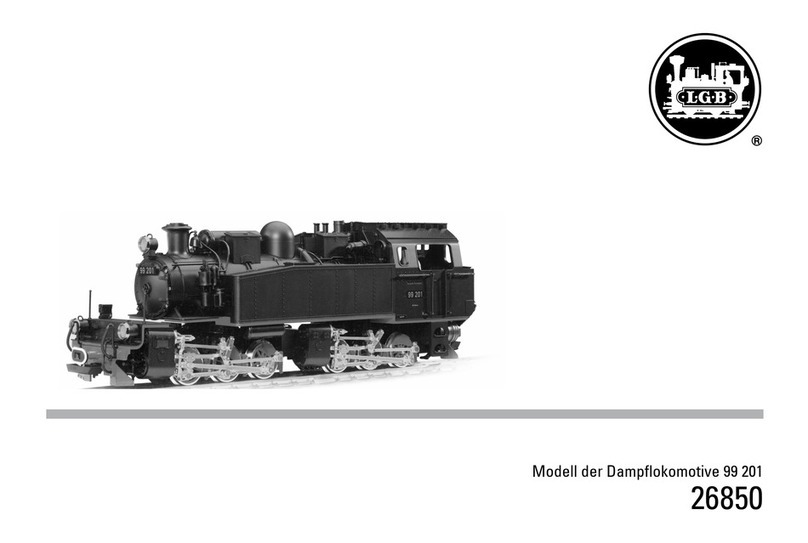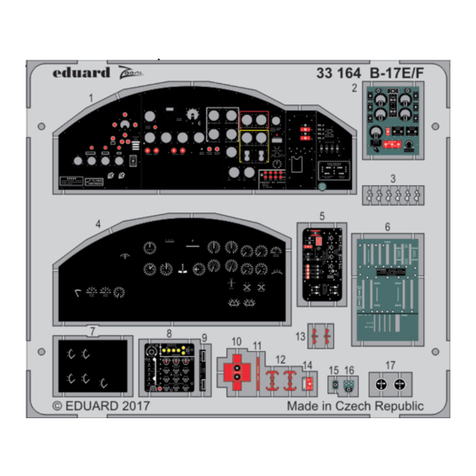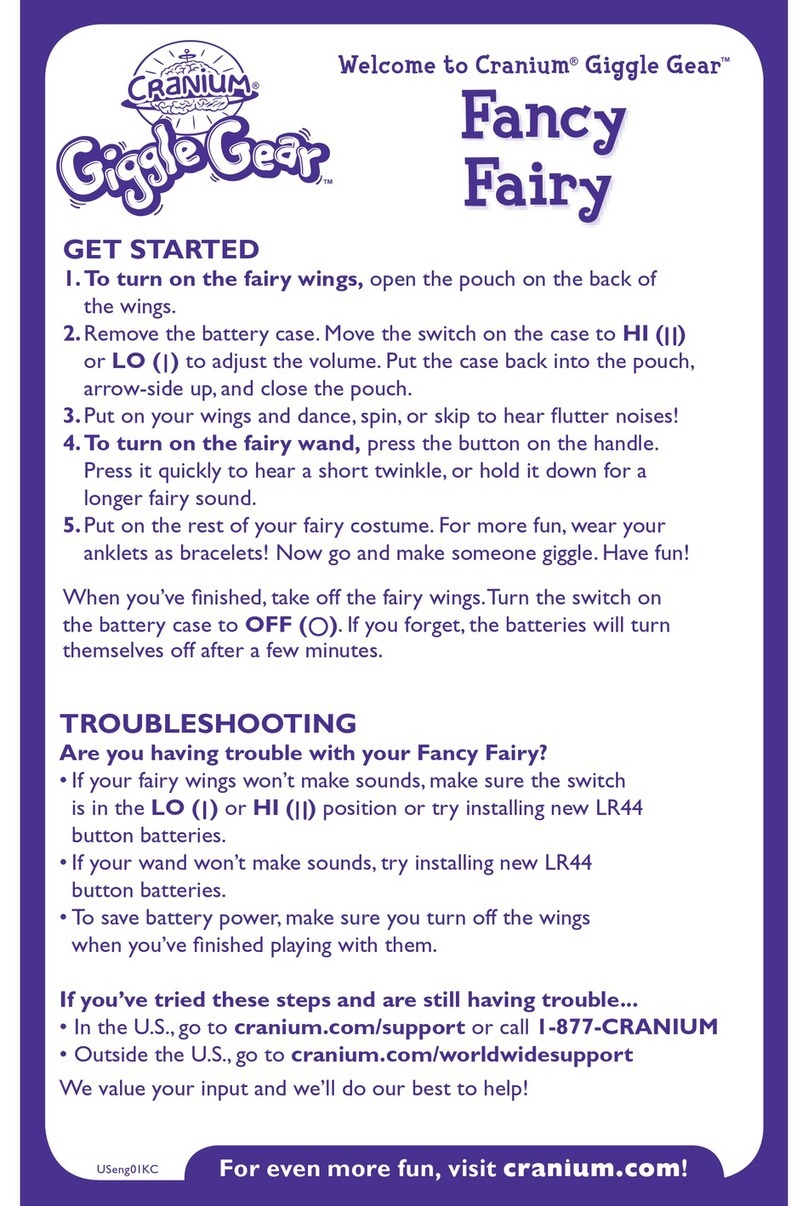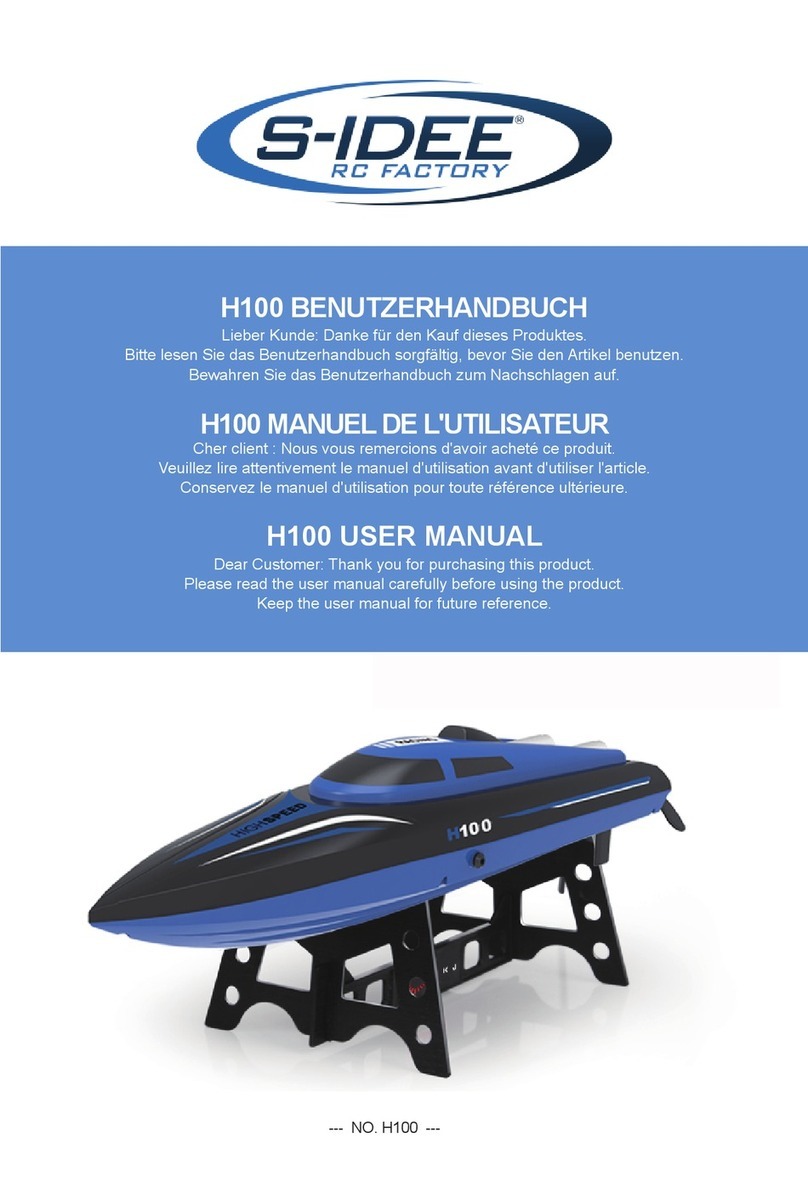Speedline Models Y Class RIB User manual

‘Y’ CLASS LIFEBOAT INSTRUCTIONS
Floor boards (in
two
h
alves
)
Sponge filled floor mat
Hull Underside
Hull Underside Hull Underside
Sponge floor mat
Small items
Floor boards
Rod/dowel
laser-cut sheet
Decals set

‘Y’ CLASS LIFEBOAT INSTRUCTIONS
1
2
4
3
5
6
7
9
2 1
2 2
2 3
2 4
1 0
1 1
1 2
1 5
1 3
8
1 9
1 6
1 4
1 7
1 8
2 0
W h e r e t o c u t t h e 0 . 5 m m t h i c k v a c f o r m i n g s

‘Y’ CLASS LIFEBOAT INSTRUCTIONS
The items are:
1. Rectangular backing pads.
2. Compass halves.
3. Oar holders (cut as shown).
4. Support for the spray shield hoop.
5. Inflation valve insert.
6. Rectangular backing pads.
7. Compass base.
8. Grab line support strip.
9. Forward storage bags.
10. Oval backing pads for the grab handles.
11. Aft storage bags.
12. Oval backing pads for the grab handles.
13. Grab line support strip.
14. Grab handles.
15. Rowlock supports.
16. Toolbox lower section.
17. Bottom of outboard motor.
18. Fuel tank bag.
19. Bases for the rope and grabs.
20. Toolbox lid.
21. Outboard motor engine cover.
22. Oar supports.
23. Oar retainers.
24. Outboard motor legs.
The kit comprises of vac-formed polystyrene parts, laser cut Perspex parts, cast resin
parts, cut vinyl lettering, rope and plastic rod.
Both plastics will glue well using Plastic Weld.
Wash the styrene parts in soapy water before starting work on them. The Perspex parts
are very clean so no need to wash them.
Make sure that any protective film which may be on the Perspex is removed.

‘Y’ CLASS LIFEBOAT INSTRUCTIONS
The kit comprises of vac-formed High Impact Polystyrene parts and laser-cut Perspex
components, Vinyl pre-cut decals, rope and plastic rod.
Both plastics should be glued using ‘Plastic Weld’, a clear liquid glue which is ideal and
dries very quickly.
The components within the plastic bag easily fall out of their backing sheet and care
should be taken to avoid loosing them.
The vac formed sheets should be washed in soapy water to remove any residue and
then dried thoroughly. (The Perspex components are very clean and do not require
washing prior to assembly).
CAUTION:
When removing the laser cut components from the backing sheet (particularly the
thinner, complicates shapes, proceeded with great care as they are attached to
their backing sheet with double sided tape. Gently ease then out, DO NOT RUSH
THIS otherwise the components may break.
The hull tubes
Begin by marking out the cutting line on
the two hull tube halves.
Make up a scribing gauge out of scrap
material similar if possible to the one in
the photograph. The idea is to enable a
line to be draw parallel to the outermost
edge at a distance of 17.5mm, the
‘halfway’ line.
The illustration below shows how the
gauge works.
17mm
Hull tubes
Gauge
The picture below show the gauge in
action!
Then there is the inside to scribe in a
similar manner.
When you are satisfied with the line
position, apply narrow masking tape (or
similar) along the line to help you guide
the knife.

‘Y’ CLASS LIFEBOAT INSTRUCTIONS
Cut very slowly and very lightly. DO
NOT try to cut all the way through in just
a couple of cuts. You wont do it and its
not necessary.
USE VERY LIGHT CUTS.
When the line is pretty well established,
try bending the plastic back and it will
probably break, just like in the photo
below. If not, try a couple more strokes.
When the parts have been cut, no
matter how hard you tried, they probably
wont fit. DON’T PANIC! Mine are
always miles out so, using a piece of
scrap wood, make up a sanding board.
Make a decent job of it, it will last for
ages and be very useful for the rest of
the kit too.
Naturally I have one I made earlier and
its still doing a good job. Use ‘150
grade’ wet and dry glued as flat as
possible.
Now sand the edges to the line keeping
as flat as possible. Do a test fit, sand a
little, test fit again. Look to see where
the proud bits are and give them a light
sanding. Test fit again. Keep doing this
until you have a good fit. Take your
time and remember, your supposed to
be enjoying this!
When you are happy with the fit (and
don’t forget what filler is for), build a
‘fence’ around the inside edges of the
lower moulding. It needs to be about
3mm wide that’s all. See the next
photo.

‘Y’ CLASS LIFEBOAT INSTRUCTIONS
Looking good eh?
Fit the top and bottom halves together
and hold in place with a little tape.
Apply ‘Plastic Weld’ with a brush all the
way round doing a section at a time.
When its all dry use, remove all the tape
and use the sanding board to get a nice
even joint line. Finish off with 400 grade
wet and dry.
When its as good as it can be, use filler
to fill any holes or unevenness and sand
smooth.
The floor and rigid section of the hull.
Use the template supplied to mark out
the 1mm polystyrene sheet. Follow the
instructions on the template. With the
hull ‘bottom-up’ fit the floor into the
recess. When happy with the fit, glue
into place. Cut out and sanded to shape
the rigid hull section and fit over the floor
as shown below.
Hull tubes
Floor
Rigid hull section
The patches and fittings on the hull.
Most of the items that fit onto the hull
tubes are in reality, rubber sheet or
rubber moulding. The four storage bags
for example fit around the hull tubes and
you will see that they are moulded onto
a curved section. They need cutting out
and then the inside shape needs
sanding to fit the hull tubes. This is
really easy when you use the
‘Speedline Wonder Sander!
See the photo below.
The Wonder Sander consists of another
piece of wet and dry, this time 400
grade, taped to the outside of one of the
hull tubes. This guarantees that the
inner curve is the same as the tubes.
Simple and inexpensive.
Well I think you will get the idea. Use
the wonder sander to shape everything
that fits onto the tubes, including the
long moulding that the lifeline goes
through.
Study the drawings and the photos and
make up all the components one at a
time. Test fit them but don’t start fitting
them into place just yet.
There is an illustrated sheet at the end
of these instructions which shows all the
parts and what they are made up from.

‘Y’ CLASS LIFEBOAT INSTRUCTIONS
The transom
The transom is made from four pieces of
Laser-Cut-Perspex (LCP) and two resin
castings.
On the largest of the LCP sheets are
two halves of the transom. Glue these
together with the engraved detail facing
outwards. The outer face of the
transom has the large ‘motor plate’ on it
and the inner face has the small strip
like spacer near the top edge.
Glue the two rings around the transom
flap holes on the inside.
Transom
Transom Flap
Ring
The two resin cast transom flaps should
be painted and then glued in place using
‘superglue’ or two part epoxy resin glue
the flaps onto the transom as shown
after the latter has been painted.
The Outboard
By now, this will be easy! The two
halves of the outboard leg simply join
along the vertical centerline, ‘but’ joining
them in a similar manner to the hull
tubes.
1
2
3
8
9
4
5
6
7
10
The drawing above shows what
everything is and where it goes. (VF is
Vac form and LCP is Laser Cut
Perspex)
1. Engine cover (VF)
2. Engine base plate (VF)
3. Handle (LCP)
4. Spacer (LCP)
5. Top hinge(LCP)
6. Pin (rod)
7. King post assembly (LCP)
8. Out side – plate (LCP)
9. Inner side – plate (LCP)
10. Bottom hinge (LCP)
Make up the engine mounting brackets
8 and 9, (the larger plate is on the
outside).
Now make up the engine mount
kingpost as follows.
The engine mount kingpost comprises
of a number of laser cut components.
Study the following drawing to see how
they all go together.
The vertical rod should be 4mm longer
than the kingpost so that it just fits into
the top and bottom hinges.

‘Y’ CLASS LIFEBOAT INSTRUCTIONS
Glue them all together to form a rigid
assembly.
Item 3, the handle can be added to give a
little more scale realism just by adding
scraps of plastic sheet and sanding to a
fuller 3D shape.
Popular Toy manuals by other brands
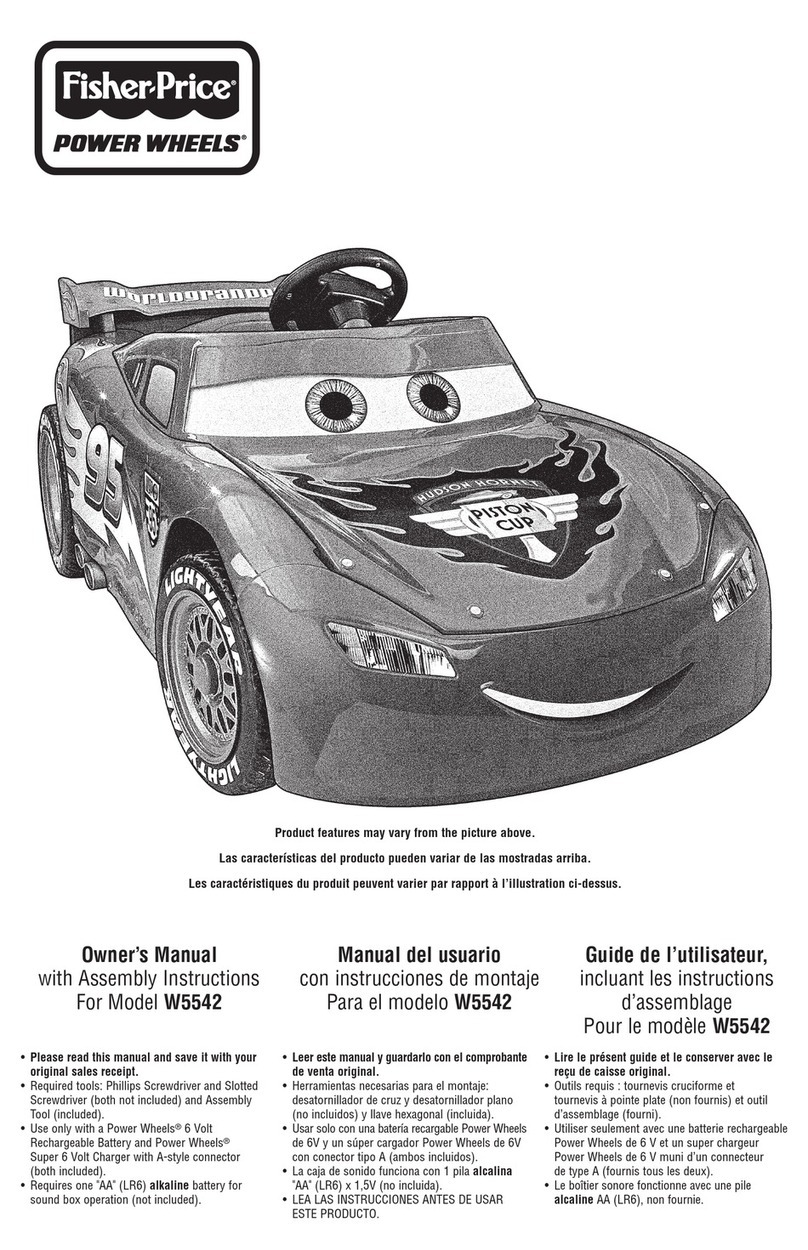
Fisher-Price
Fisher-Price W5542 owner's manual
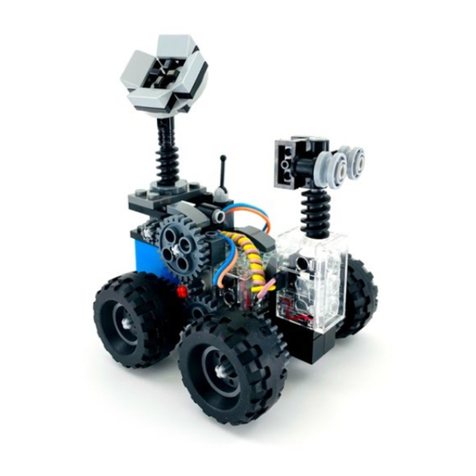
Circuit Cubes
Circuit Cubes Space Rovers XV-A1 manual

THUNDER TIGER
THUNDER TIGER mini Titan V2 Series instruction manual
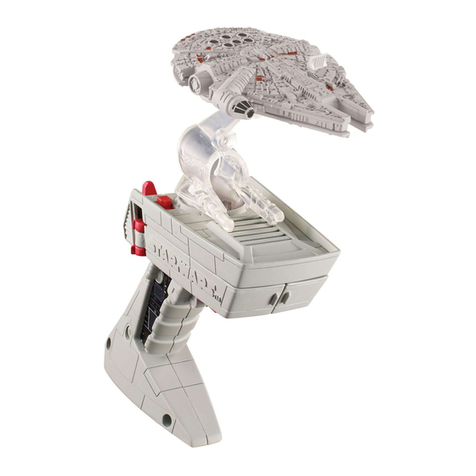
Mattel
Mattel Hot Wheels Star Wars FLIGHT CONTROLLER instructions
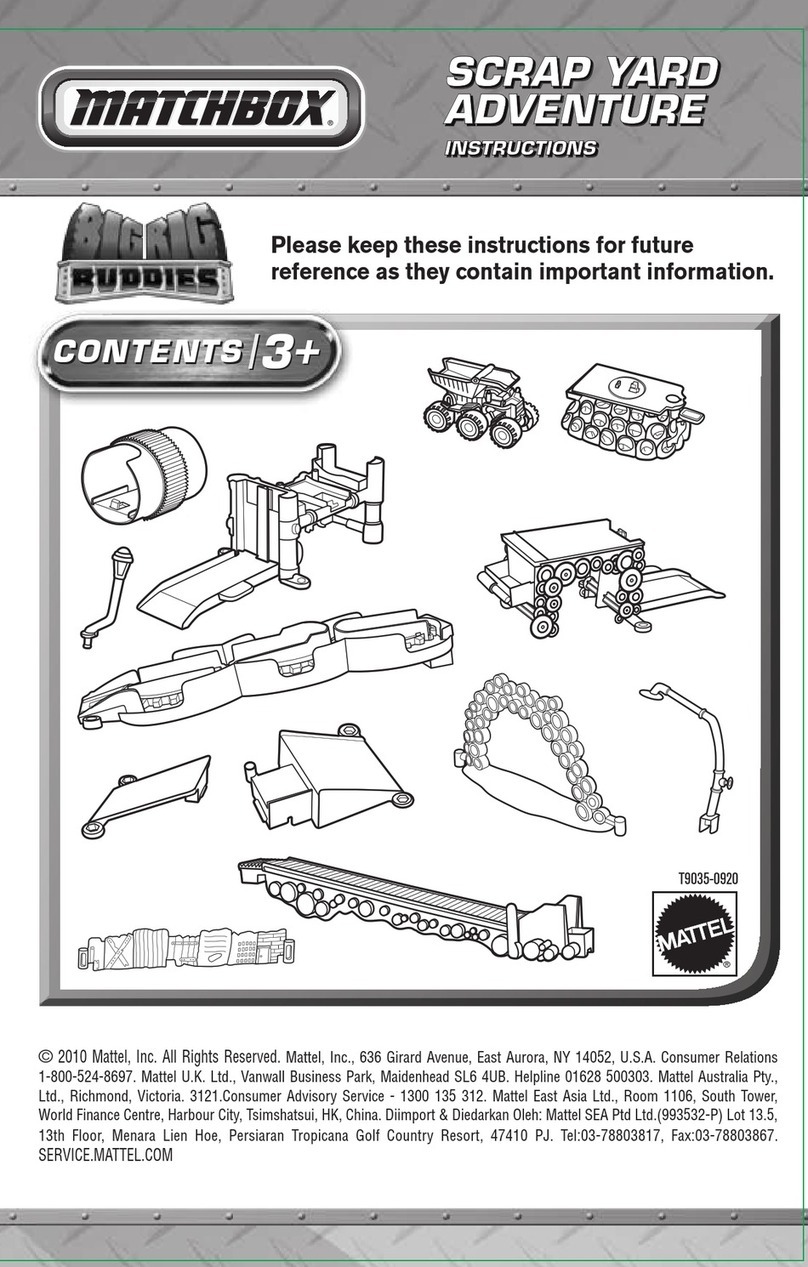
Mattel
Mattel MATCHBOX BIG RIG BUDDIES SCRAP YARD... instructions

Eduard
Eduard EF-2000 Typhoon Single Seater quick start guide
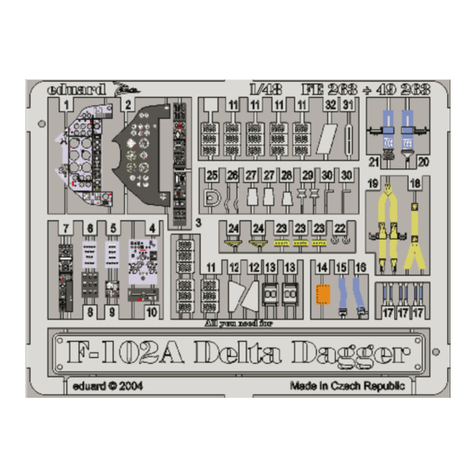
Eduard
Eduard Zoom F-102 Delta Dagger quick start guide

Kyosho
Kyosho spree sports m36 instruction manual
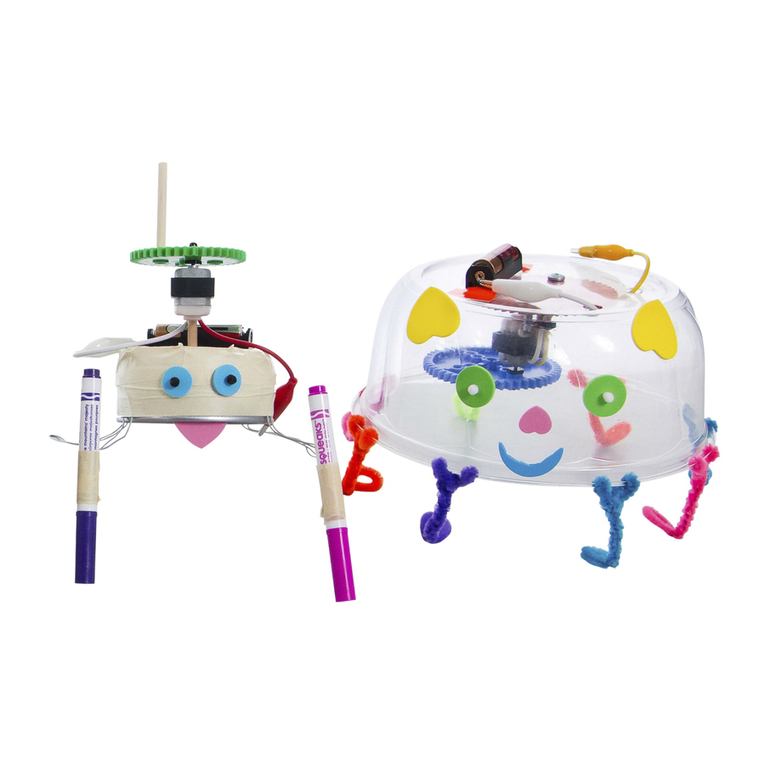
TeacherGeek
TeacherGeek Wiggle-Bot quick start
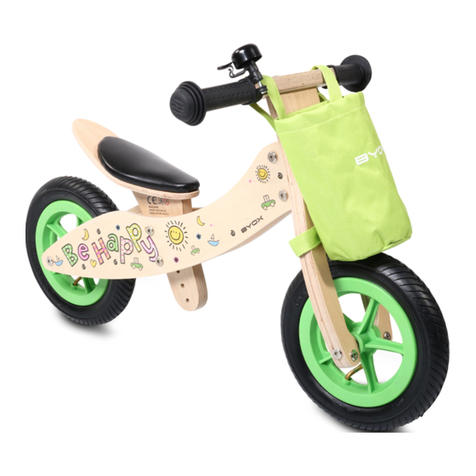
byox
byox Be Happy instruction manual
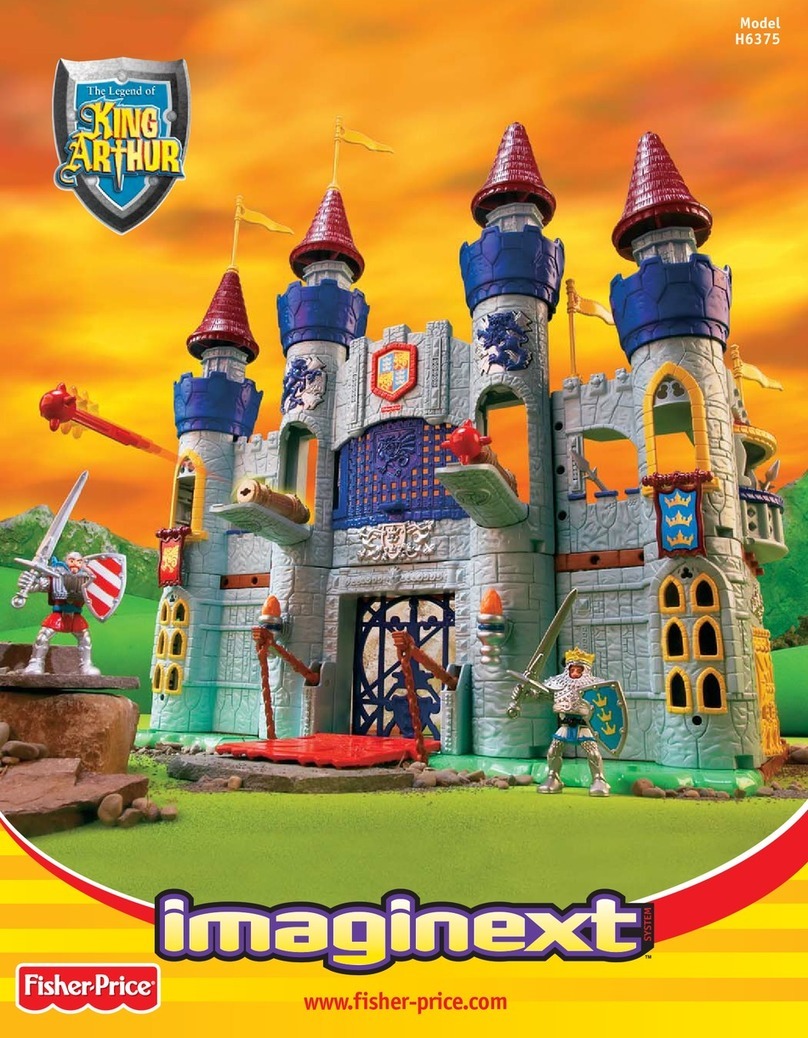
Fisher-Price
Fisher-Price Imaginext Legend Of King Arthur H6375 manual
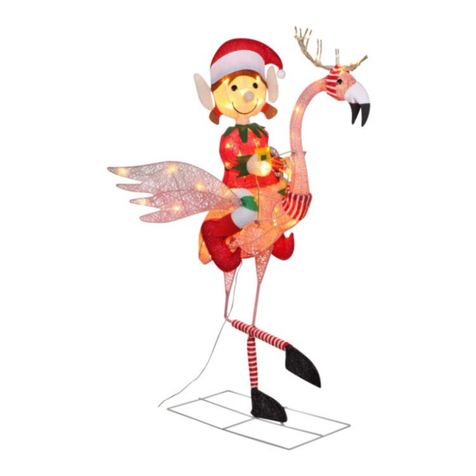
Haute Decor
Haute Decor DCYD0009 quick start guide


